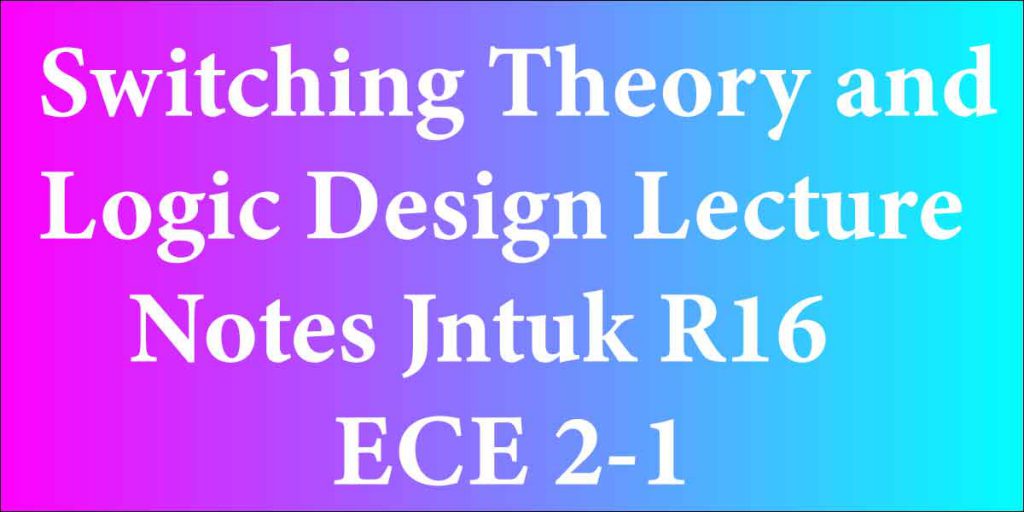Switching Theory and Logic Design
UNIT – I:
REVIEW OF variety SYSTEMS & CODES: i) illustration of numbers of various base, speech from one base to a different base, r-1’s compliments and r’s compliments of signed members, downside resolution. ii) four bit codes, BCD, Excess-3, 2421, 84-2-1 9’s compliment code etc., iii) Logic operations and error detection & correction codes; Basic logic operations -NOT, OR, AND, Universal building blocks, EX-OR, EX-NOR – Gates, normal SOP and POS, Forms, Gray code, error detection, error correction codes (parity checking, even parity, odd parity, overacting code) NAND-NAND and NOR-NOR realizations.
UNIT – II:
diminution TECHNIQUES mathematician theorems, principle of complementation & duality, De-morgan theorems, diminution of logic functions mistreatment mathematician theorems, diminution of change functions mistreatment K-Map up to six variables, tabular diminution, downside resolution (code-converters mistreatment K-Map etc..).
UNIT – III:
combinable LOGIC CIRCUITS style style of 0.5 adder, full adder, 0.5 subtractor, full subtractor, applications of full adders, 4-bit binary subtractor, adder-subtractor circuit, BCD adder circuit, Excess three adder circuit, look-a-head adder circuit, style of decoder, demultiplexer, seven section decoder, higher order demultiplexing, encoder, electronic device, higher order multiplexing, realization of mathematician functions mistreatment decoders and multiplexers, priority encoder, 4-bit digital comparator.
UNIT – IV:
INTRODUCTION OF PLD’s promenade, PAL, PLA-Basics structures, realization of mathematician operate with PLDs, programming tables of PLDs, deserves & demerits of promenade, PAL, PLA comparison, realization of mathematician functions mistreatment promenade, PAL, PLA, programming tables of promenade, PAL, PLA.
UNIT – V:
sequent CIRCUITS I Classification of sequent circuits (synchronous and asynchronous); basic flip-flops, truth tables and excitation tables (nand RS latch, nor RS latch, RS flip-flop, JK flip-flop, T flip-flop, D flip-flop with reset and clear terminals). Conversion from one flip-flop to flip-flop. style of ripple counters, style of synchronous counters, Johnson counter, ring counter. style of registers – Buffer register, management buffer register, register, bi-directional register, universal register.
UNIT – VI:
sequent CIRCUITS II Finite state machine; Analysis of clocked sequent circuits, state diagrams, state tables, reduction of state tables and state assignment, style procedures. Realization of circuits mistreatment varied flip-flops. Meelay to Moore conversion and vice-versa.
II Year – I Semester
L T P C
4 0 0 3
SWITCHING THEORY AND LOGIC style
TEXT BOOKS:
one. change Theory and Logic style by Hill and Peterson Mc-Graw Hill TMH edition.
2. change Theory and Logic style by A. Anand Kumar three. Digital style by Mano letter.
REFERENCE BOOKS:
one. trendy Digital physical science by RP Jain, TMH
2. Fundamentals of Logic style by Charles H. Roth Jr, Jaico Publishers three. small physical science by Milliman MH edition.

